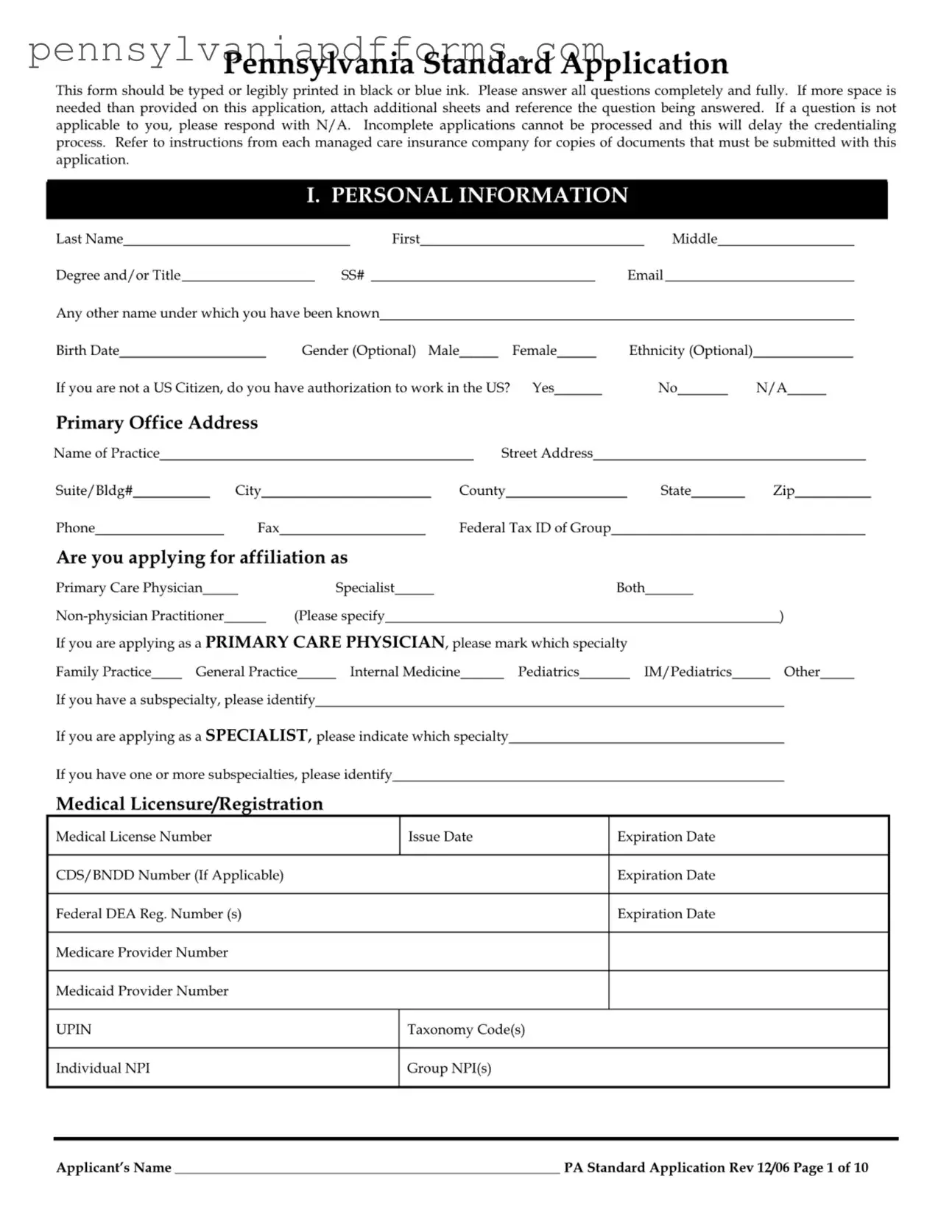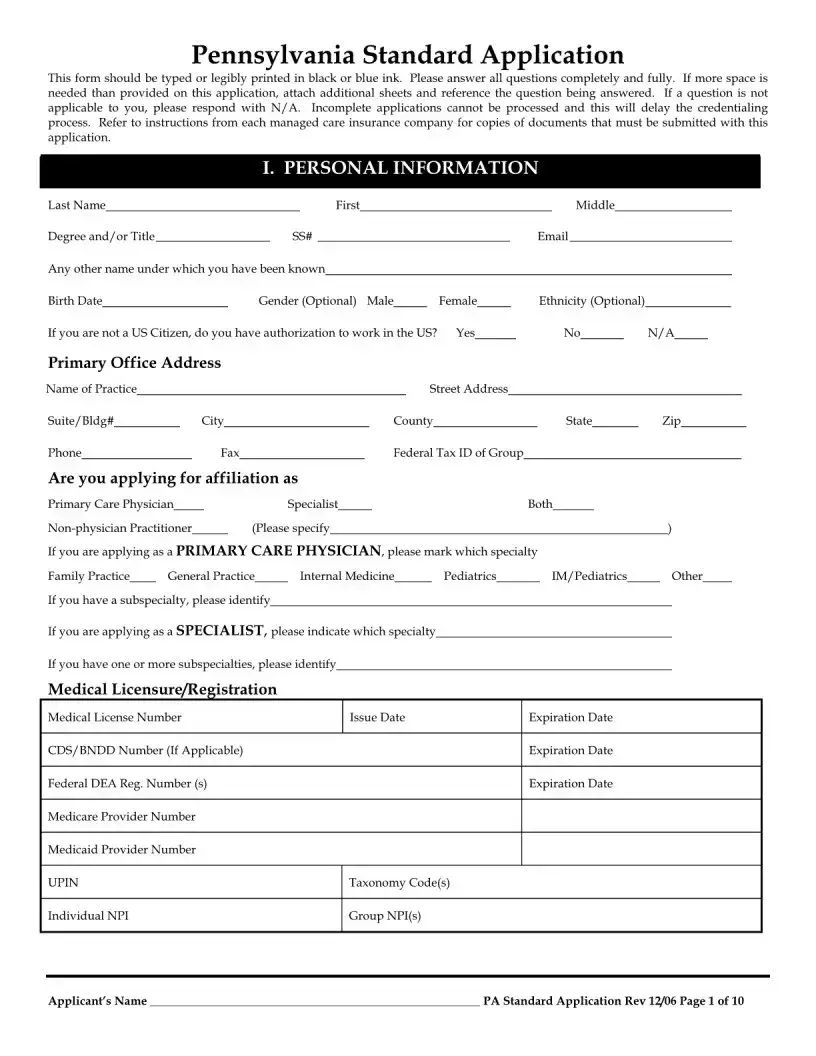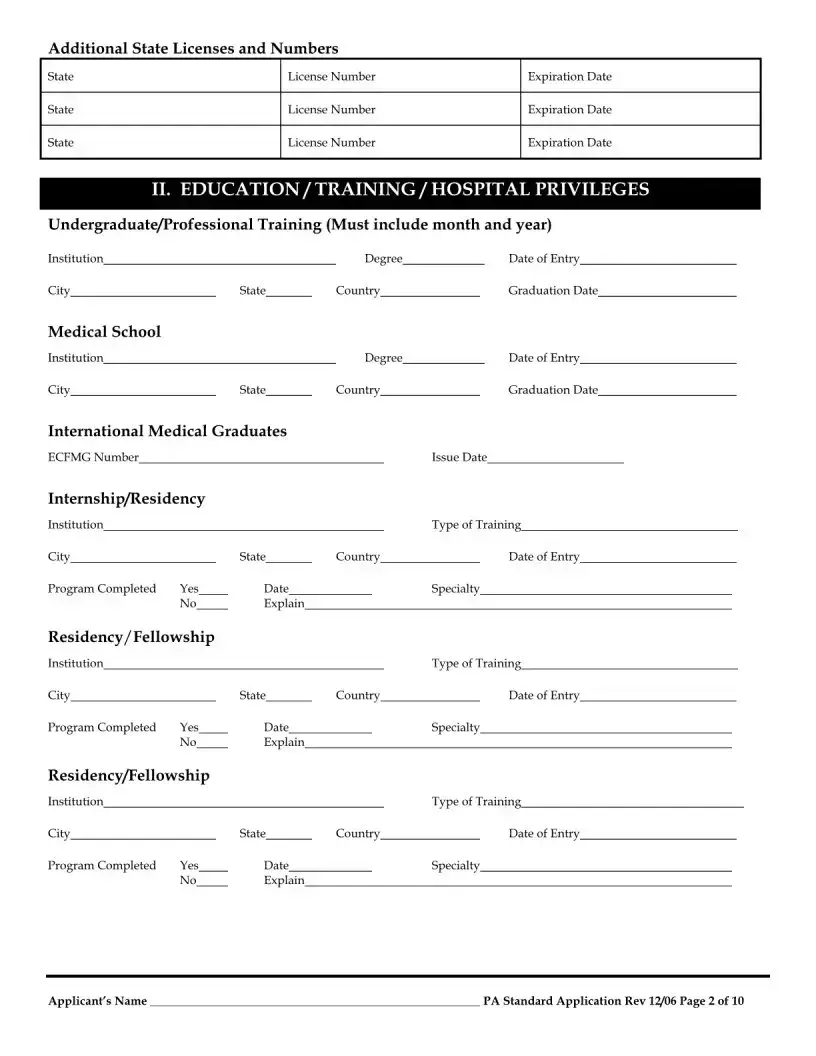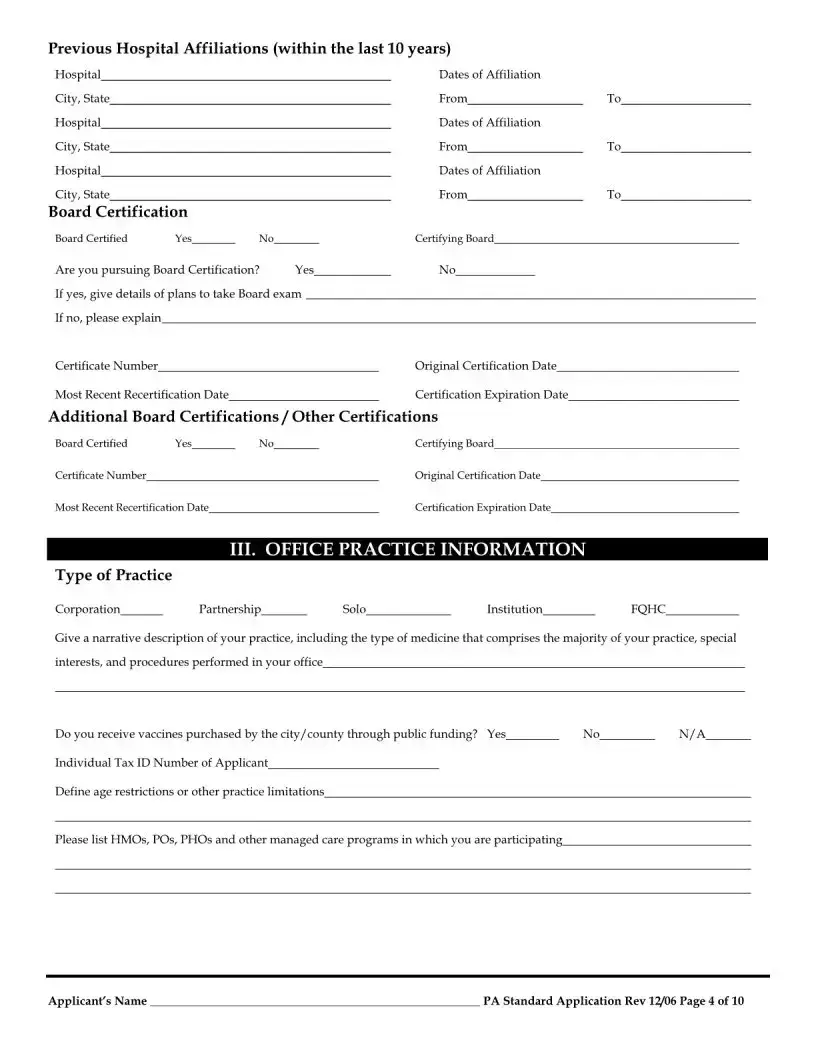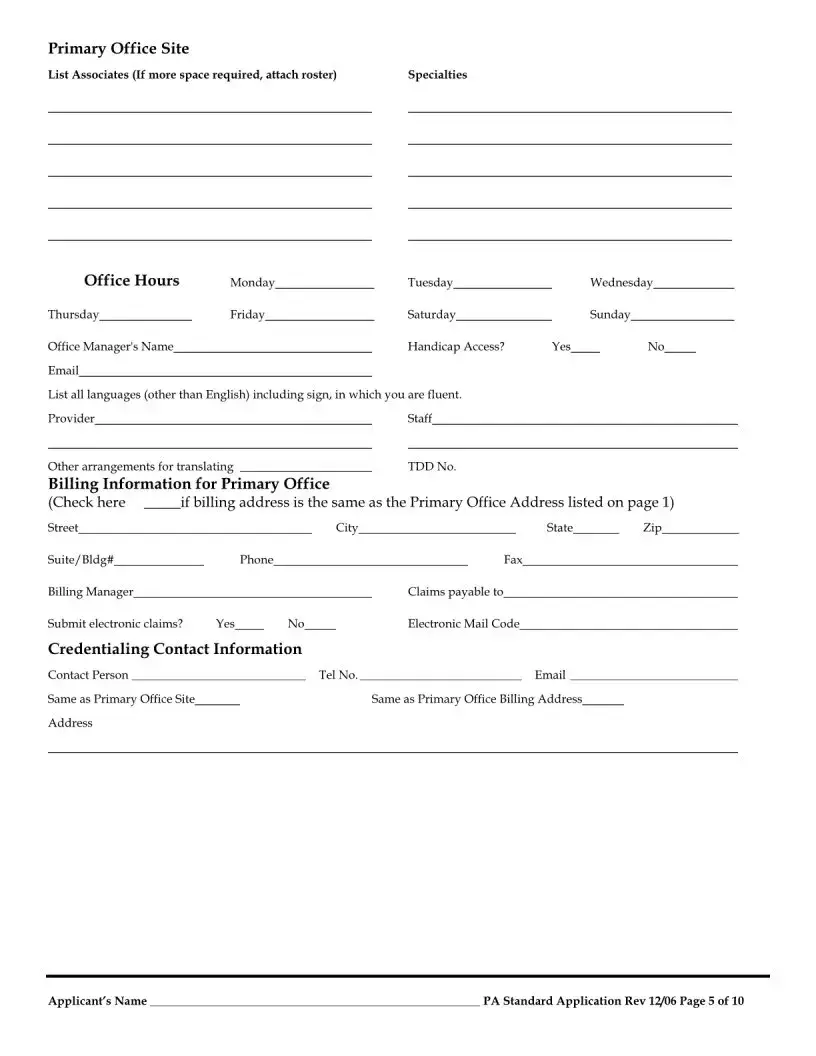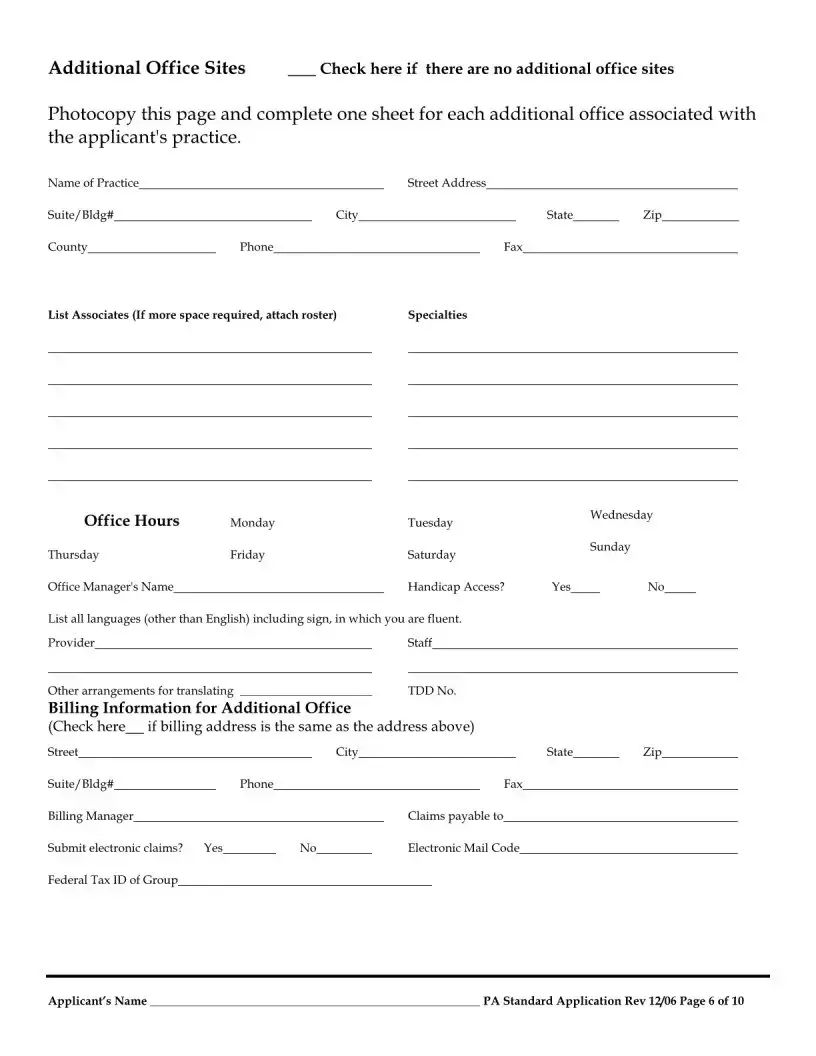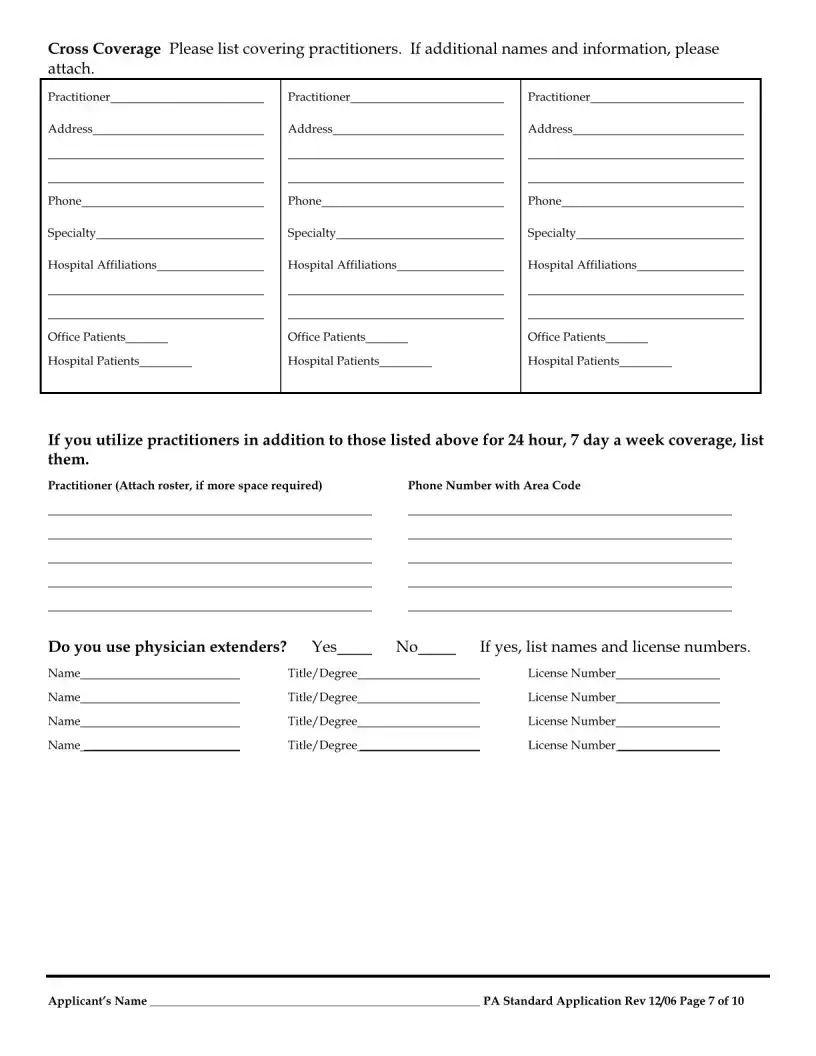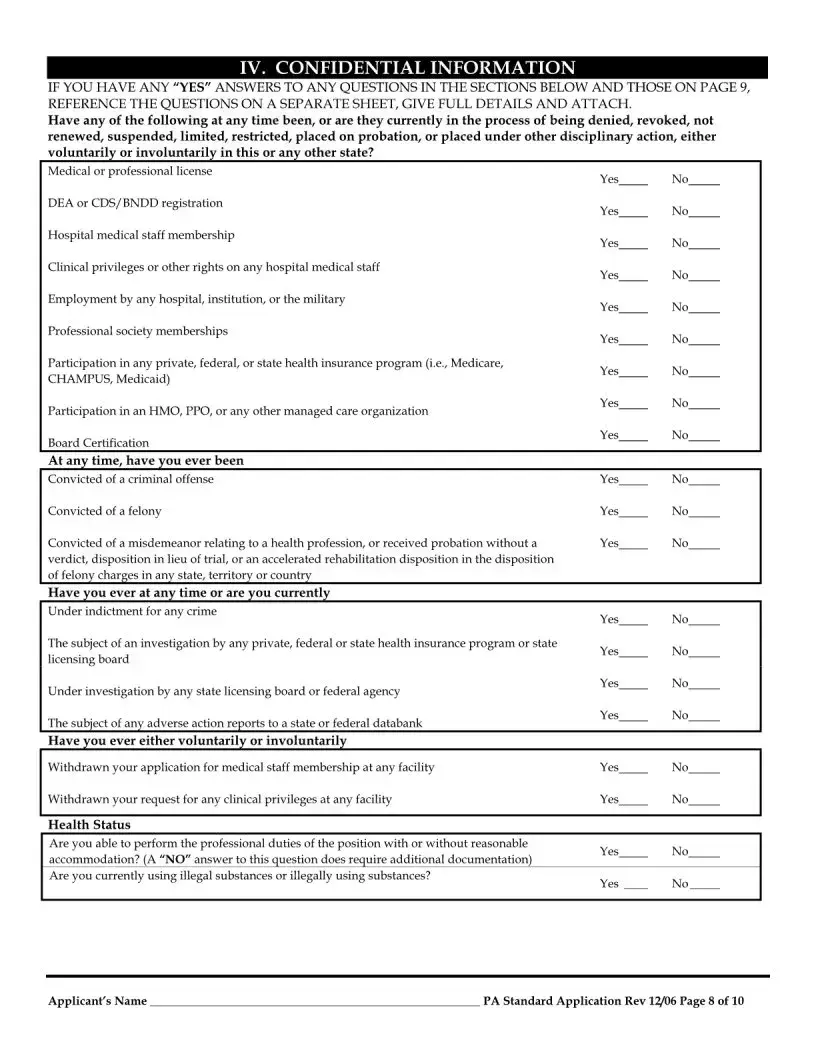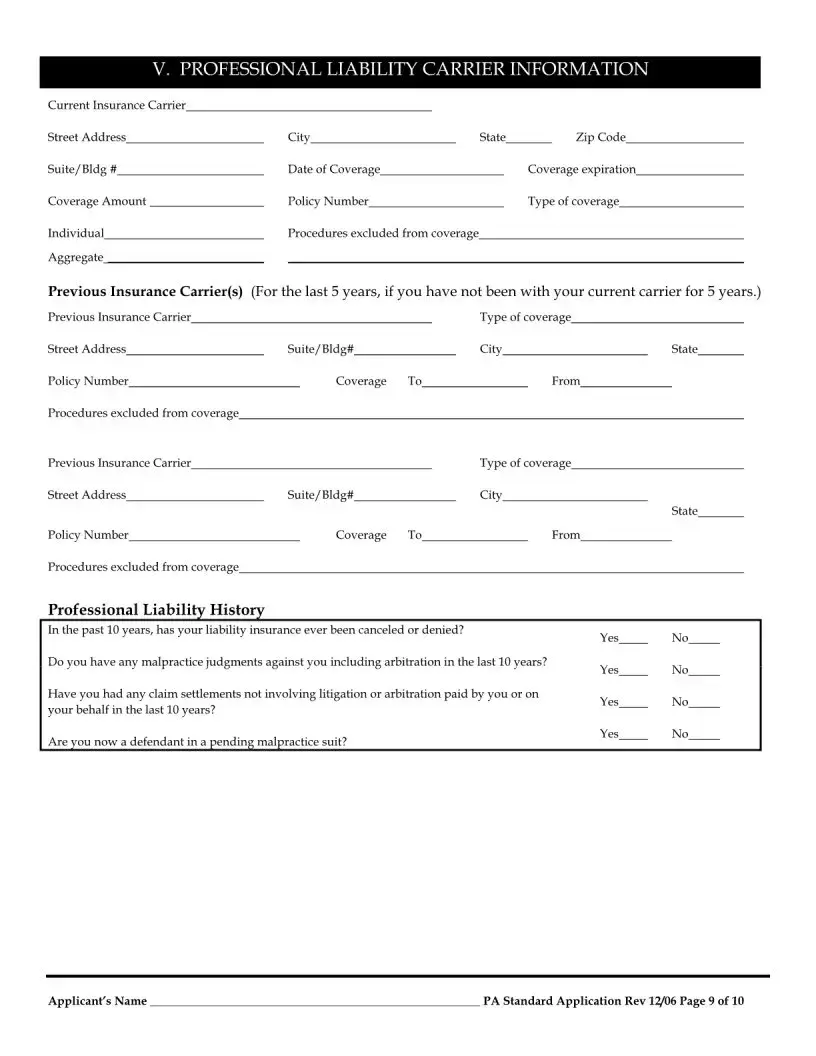Completing the Pennsylvania Standard Application form can be a straightforward process if approached with care. However, several common mistakes can lead to delays or complications in the credentialing process. One significant error is failing to provide complete answers to all questions. Each section of the application requires thorough responses, and incomplete applications cannot be processed. This oversight can lead to unnecessary delays in obtaining necessary credentials.
Another frequent mistake is neglecting to indicate "N/A" for questions that do not apply to the applicant. This omission can create confusion for the reviewing party, as they may assume that the applicant simply overlooked the question. By clearly marking irrelevant questions as not applicable, applicants can streamline the review process and demonstrate attention to detail.
Many applicants also forget to include required documentation with their application. Each managed care insurance company may have specific instructions regarding additional documents that must accompany the application. Failing to include these documents can result in the application being returned or delayed, which can hinder the applicant’s ability to practice.
Additionally, using incorrect ink or handwriting can lead to issues. The instructions specify that the form should be typed or legibly printed in black or blue ink. Applications that do not adhere to this requirement may be deemed unprofessional or difficult to read, potentially affecting the review process.
Another common error involves the omission of important personal information, such as Social Security numbers or medical license details. Each piece of information is critical for the verification process. Missing this data can stall the application and create unnecessary back-and-forth communication with the reviewing agency.
Applicants often overlook the importance of accurately listing their work history and explaining any gaps in their employment chronology. Providing a clear and complete work history not only demonstrates transparency but also helps establish the applicant’s qualifications and experience in the field.
Finally, many individuals underestimate the importance of reviewing their application before submission. Errors in spelling, grammar, or factual inaccuracies can undermine the professionalism of the application. A thorough review can catch these mistakes and ensure that the application presents the applicant in the best possible light.
